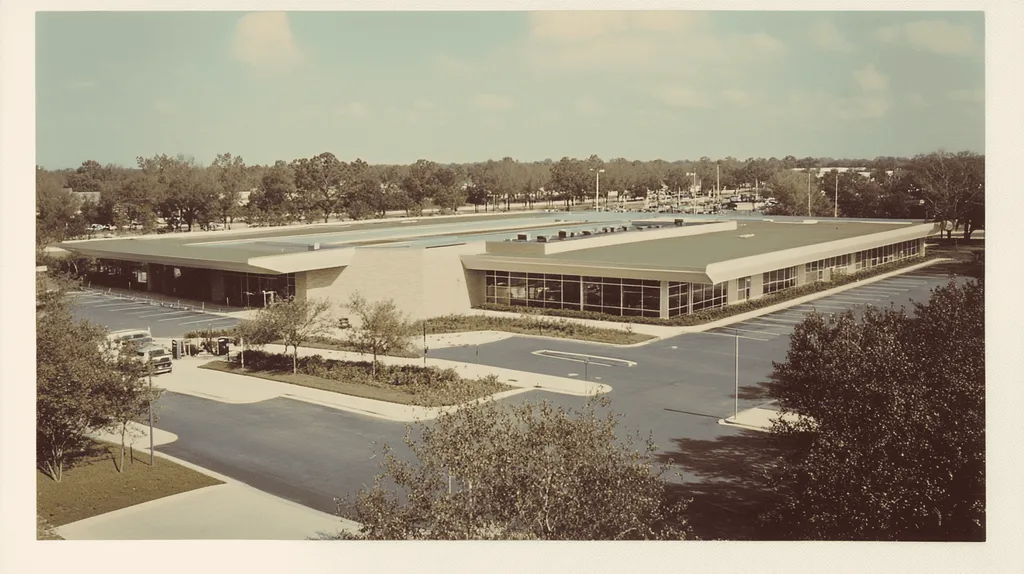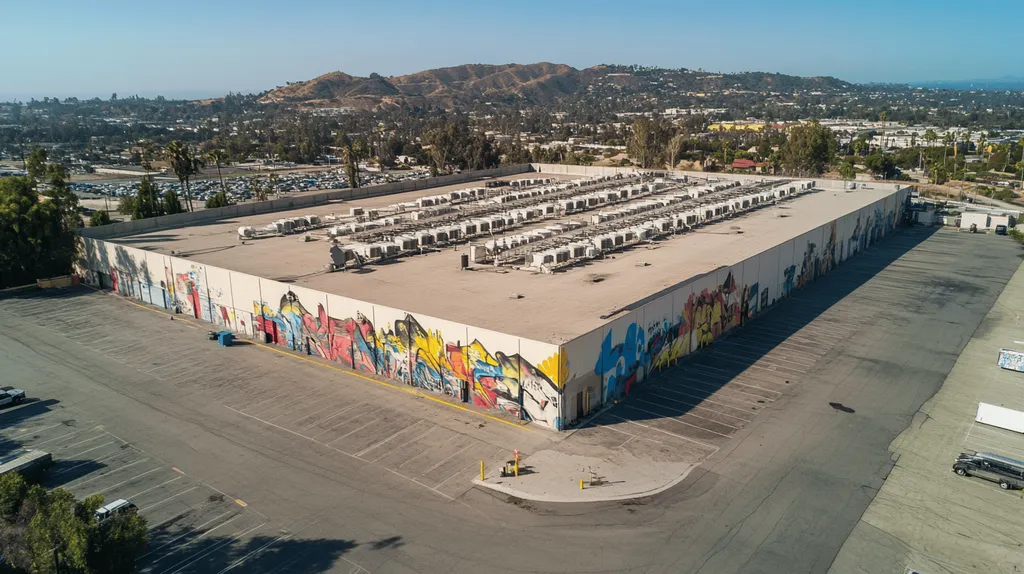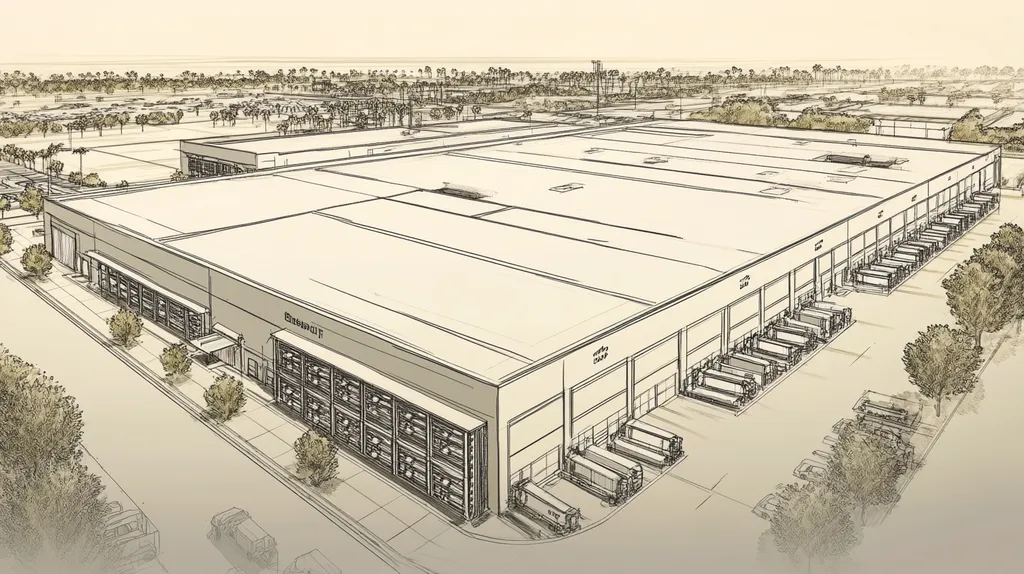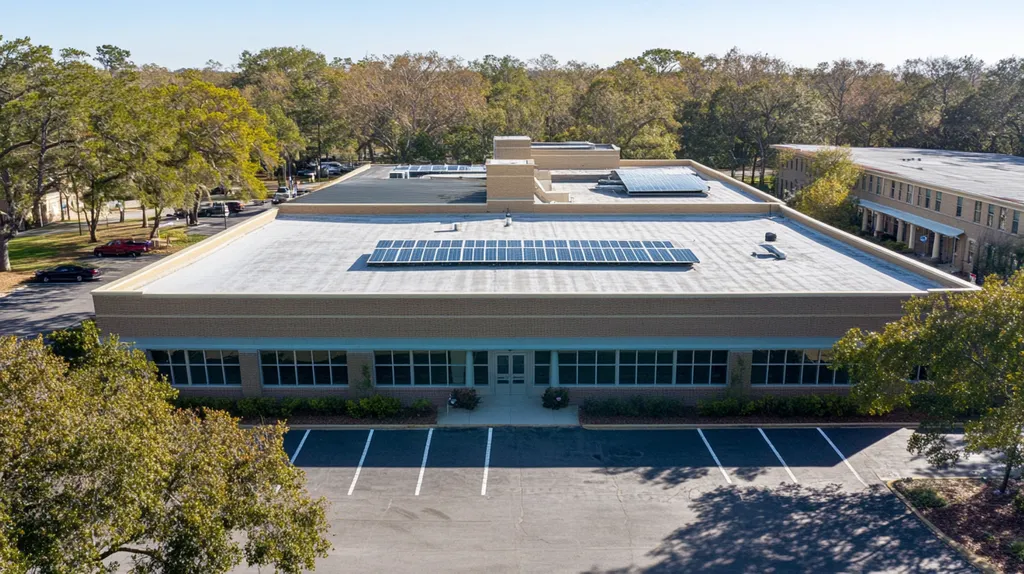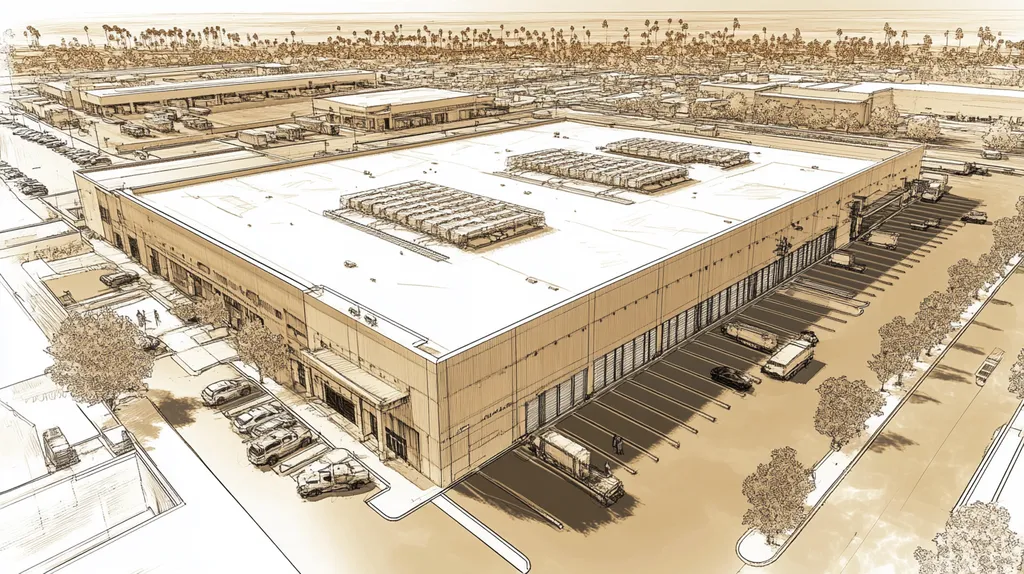In commercial roofing, proper surface preparation can mean the difference between a coating that lasts 15+ years and one that fails within months. Industry studies show that over 40% of coating failures stem directly from inadequate preparation.
From substrate compatibility to cleaning techniques, each step in the preparation process plays a vital role in protecting millions of square feet of commercial roofing investments.
This comprehensive guide breaks down the essential elements of roof preparation, helping property owners and facility managers ensure their coating applications deliver maximum performance and longevity.
SECTION 1: FUNDAMENTAL CONCEPTS
Preparing a commercial roof for coating applications isn’t just a good idea; it’s essential for ensuring the roof’s durability and longevity. Commercial roofs endure constant exposure to the elements, which can lead to significant wear and tear. In fact, a staggering 40% of commercial roof failures are attributed to insufficient surface preparation. By gaining an understanding of different roof substrates, prioritizing surface preparation, and adhering to compatibility and adhesion principles, property owners and facility managers can safeguard their investments and ensure their roofs perform at their best.
Understanding Roof Substrate Types
Each type of roof substrate has unique traits that influence how well coatings will stick. Common substrates include TPO, PVC, EPDM, and metal roofs, and each one requires a tailored preparation approach. For example, TPO and PVC membranes work exceptionally well with fluid-applied coatings, while modified bitumen roofs might not yield the same results. Understanding these distinctions can prevent future headaches.
Knowing the properties of various substrates also guides property owners in selecting the right coatings. A mismatch between the coating and the substrate can lead to adhesion failures, causing issues like peeling or blistering. Engaging with roofing professionals to accurately identify the substrate type and recommended coating options is a wise strategy.
Additionally, attention to details such as insulation type and roof slope is vital. A flat roof behaves differently in terms of water drainage when compared to a sloped one. Consequently, coating material choices should align with these characteristics to achieve peak performance.
Choosing a suitable coating not only boosts performance but can also extend the roof’s lifespan, creating significant cost savings over time. Therefore, property managers should make understanding substrate types a priority in their planning for coating applications.
Importance of Surface Preparation
Think of surface preparation like laying a solid foundation before building a house — it is the key to successful coating applications. Thoroughly cleaning and priming the roof surface is vital for ensuring that coatings stick effectively, which enhances their durability. Industry standards highlight that dirty or damaged surfaces can severely compromise coating effectiveness, leading to premature failures.
Different substrates require different cleaning methods. For instance, pressure washing is an effective way to clear off dirt and debris from EPDM roofs, while metal roofs may benefit more from chemical cleansers. Choosing the appropriate cleaning strategy is crucial for creating a surface that promotes strong adhesion.
In addition, any existing damage must be promptly repaired before applying coatings. Issues like cracks, punctures, or membrane failures could undermine the entire roofing system if neglected. Therefore, property owners should ensure that all necessary repairs and material replacements occur prior to coating application.
Regular maintenance is equally important in enhancing preparation efficiency. Implementing a routine inspection schedule can catch and address potential problems before they escalate into costly repairs. By emphasizing surface preparation, property owners can avoid significant long-term expenses.
Adhesion and Compatibility Principles
The principles of adhesion and compatibility are at the heart of successful coating applications. For coatings to endure, they must form a strong bond with the substrate. Weak adhesion can lead to issues such as bubbling, peeling, and ultimately failure of the coating system.
To achieve proper adhesion, it’s essential to consider factors like temperature and humidity during the application process. Coatings perform best within specific temperature ranges; overlooking these guidelines can result in inadequate curing and diminished performance.
Compatibility between the chosen coating and the substrate is also critical. Not all coatings are fit for every substrate, and compatibility challenges often arise from chemical interactions. To avoid complications, property owners should work closely with knowledgeable roofing contractors to ensure chosen products are aligned.
Additionally, testing existing surfaces prior to coating application can help confirm their suitability. This proactive measure prevents problems related to adhesion and fosters the desired longevity of the roofing system, ultimately protecting the owner’s investment.
SECTION 2: SYSTEM COMPONENTS
Preparing a commercial roof for coating applications is not just an option; it’s a necessity. Choosing the wrong coating can lead to expensive repairs and reduced insulation efficiency. Nearly 75% of commercial roofs require maintenance or replacement, making it essential to understand the critical components involved. This section explores the different types of coatings available, the vital roles of primers and sealants, and the importance of compatible materials and accessories. Each of these elements plays a significant role in enhancing the roof’s durability and overall performance.
Types of Commercial Roof Coatings
Commercial roof coatings come in a variety of types, each designed to meet specific needs. Acrylic coatings are well-regarded for their UV resistance, making them ideal for sunny locations, while silicone coatings shine in waterproofing capabilities. Polyurethane coatings are known for their outstanding durability and chemical resistance, making them perfect for industrial environments.
The choice of coating profoundly influences a roof’s performance. For example, acrylic coatings not only reflect sunlight but also help in lowering energy costs, enhancing a building’s overall efficiency. Meanwhile, silicone formulations can effectively manage standing water, reducing the risk of leaks and structural damage.
It’s crucial for property owners to evaluate their roof’s specific needs by considering local climate and exposure to chemicals. This informed decision-making can significantly enhance roof functionality and extend its service life.
Ultimately, selecting the right roof coating plays a key role in minimizing maintenance frequency and controlling overall costs. Informed choices can lead to significant savings and a more resilient roofing system.
Role of Primers and Sealants
Primers and sealants are critical in improving roof coating performance. Primers prepare the roofing surface, enhancing the adhesion of the topcoat. A well-applied primer helps prevent peeling, promoting a strong bond that extends the coating’s lifespan.
Sealants act as formidable barriers against leaks and environmental damage, filling in any gaps and cracks. They provide essential waterproofing, particularly around seams and penetrations, where vulnerabilities are often heightened.
The synergy of quality primers and sealants creates a robust system that can significantly lower maintenance costs. A roof equipped with effective seals can better endure harsh conditions, reducing the frequency of repairs. This proactive approach is not merely cosmetic; it’s a fundamental part of maintaining longevity.
Investing in appropriate primers and sealants is crucial for commercial property owners. It paves the way for reduced energy expenses and less frequent repairs, ultimately benefiting the budget over the long haul.
Compatible Materials and Accessories
Understanding compatible materials and accessories is vital when preparing a roof for coating applications. Utilizing materials that align with the chosen coating type can enhance installation efficiency. For example, specific liquid coatings are designed to work seamlessly with PVC membranes.
Accessories such as flashings, drainage systems, and edge details are equally important. These components must integrate with the roof coating to prevent leaks and extend the roof’s lifespan. Ensuring compatibility across all materials maximizes performance and minimizes potential issues.
Additionally, property owners must consider the substrate material beneath the coating. Metal roofs, for instance, require specialized coatings that account for thermal expansion and contraction. Each roofing material possesses distinct characteristics, and the right coatings should enhance rather than compromise their functionality.
A thorough understanding of material compatibility ultimately leads to a more effective roofing system capable of withstanding harsh conditions while providing optimal protection.
SECTION 3: IMPLEMENTATION METHODS
Preparing a commercial roof for coating applications is not just a procedure; it’s a vital step that directly influences the roof’s lifespan and the entire building’s integrity. Neglecting proper preparation can result in issues like peeling, early deterioration, and expensive repairs. Shockingly, industry studies show that up to 30% of coating failures stem from inadequate surface preparation. This section will detail essential implementation methods, encompassing inspection, cleaning, and application techniques to guarantee a successful coating process.
Inspection and Repair of Roof Surfaces
Thorough inspection of roof surfaces is the crucial first step in preparation. Identifying existing issues such as leaks, blisters, or cracks is imperative before applying any coatings. Overlooking damage can lead to severe failures later on, compromising the structure of the building.
Routine inspections should include both visual checks and moisture testing to effectively address any underlying problems. For example, a damaged seam can allow water to seep in, making a new coating ineffective.
Once issues are identified, timely repairs using appropriate materials become vital. Using waterproof sealants for cracks or reinforcing weakened areas can bolster the roof’s overall durability. These proper repairs help limit future damage and significantly enhance the longevity of the coating.
Executing these repairs requires trained professionals who not only fix the problems but can also advise on ongoing roof maintenance post-coating. This proactive approach helps to prevent complications down the line.
Cleaning and Debris Removal Techniques
Effective cleaning is a critical part of the preparation process. Debris like leaves, dirt, or algae can obstruct adhesion, leading to coating failures. A clean surface aids in forming a strong bond between the roof and the coating material.
Power washing is a commonly employed technique for large-scale cleaning. This method efficiently removes built-up grime without causing harm to the underlying materials. However, careful inspections of the equipment and appropriate pressure settings are necessary to avoid damage.
In addition to power washing, utilizing environmentally safe cleaning agents can help eradicate stubborn stains and biological growth. These agents break down contaminants while being gentle on the environment.
Post-cleaning, it’s essential to allow the roof to dry completely. Any moisture remaining on the surface can dramatically compromise coating performance, so taking this simple yet important step can significantly impact the longevity and effectiveness of the coating.
Application Methods for Different Coatings
Different types of coatings require specific application methods to achieve optimal performance. The choice of coating hinges on various factors such as the roof’s material, the environmental conditions, and the desired longevity. For instance, acrylic coatings are recognized for their flexibility and effectiveness in extreme weather.
Spraying is a popular application method that allows for a quick and even distribution of coatings. This technique creates a uniform layer, significantly reducing the likelihood of imperfections. For areas needing precision, brush or roller applications are also effective.
Adhering to manufacturer guidelines during application is essential. These guidelines specify important factors like temperature and humidity, which can significantly impact the curing time and overall success of the coating. Ignoring these instructions can negate the intended benefits of the coating.
Finally, conducting quality checks after application is crucial for spotting early issues. Ensuring proper adhesion of the coating lays a strong foundation for a long-lasting, protective layer. Investing in proper application methods ultimately enhances the overall effectiveness of roofing solutions.
SECTION 4: MAINTENANCE REQUIREMENTS
Neglecting roof maintenance can lead to significant financial losses and safety hazards. In fact, studies show that unmaintained commercial roofs frequently suffer leaks and structural damage, with repair costs skyrocketing. Implementing a regular maintenance plan is vital for extending a roof’s lifespan and ensuring optimal coating performance. This section will outline the importance of regular inspections, how to address common roofing issues, and the timely reapplication of coatings.
Regular Inspection and Cleaning Schedules
Regular inspections are essential to catch problems before they escalate. Facility managers should aim to schedule these assessments at least twice a year, ideally in spring and fall, to identify early signs of wear, leaks, or debris buildup that could threaten the coating’s integrity.
Cleaning is equally critical; accumulated dirt, leaves, and debris can trap moisture, leading to gradual deterioration. Roofs should be cleared of debris regularly, especially after severe weather events. Employing trained personnel for this task helps minimize safety risks and ensures the roof receives thorough inspection.
Integrating inspections and cleaning into a comprehensive maintenance plan strengthens the durability of the roof coating. A consistent schedule not only preserves surface performance but also supports the warranty conditions often associated with commercial roof coatings.
Documenting these inspections can track the roof’s health over time, offering valuable insights into its condition and helping inform future maintenance decisions.
Addressing Common Issues and Repairs
Property owners must proactively address common roofing issues that can impact coating performance. Frequent problems include blisters, cracks, and ponding water, which can significantly compromise the roof’s integrity and the effectiveness of any applied coatings.
To repair blisters, it’s essential to drain any trapped moisture and reseal the area, preventing future issues. Cracks should be filled with a suitable sealant to stop water intrusion. Facility managers should pay close attention to ponding water, as neglecting it can lead to significant structural concerns.
Hiring experienced professionals for repairs ensures these issues are handled correctly. The use of quality materials during repair work not only resolves current problems but also prolongs the lifespan of the roof coating.
Effective communication with roofing contractors about the specific needs of the surface often leads to better-maintained roofs, ultimately reducing long-term costs dramatically.
Coating Reapplication and Renewal
Coatings have a finite lifespan, and their effectiveness decreases over time. Knowing when and how to reapply coatings is essential for preserving roof integrity. Typically, re-coating is recommended every five to ten years, depending on the type of coating and environmental factors.
Signs that a coating needs renewal include visible cracking, fading, and areas showing wear. If these issues arise during regular inspections, property owners should plan for reapplication to maintain roof performance.
Renewing the coating revitalizes the roof’s appearance and significantly enhances its waterproof characteristics. Additionally, employing the same type of coating or one with similar qualities ensures compatibility and effectiveness.
When planning for reapplication, property owners should consider weather conditions and timing. Avoiding extreme temperatures and storms during the application process can result in a more successful, long-lasting coating.
SECTION 5: PERFORMANCE METRICS
In today’s competitive commercial roofing landscape, ensuring optimal performance is paramount. Property owners face substantial costs tied to roofing issues, such as premature failures and excessive energy bills. Research indicates that properly prepared roofs can extend the lifespan of their coatings by at least 20%. By understanding performance metrics, property owners can make informed decisions that enhance both investment and sustainability.
Evaluating Coating Adhesion and Durability
Coating adhesion and durability stand as vital metrics in the assessment of roof preparation. If a roof isn’t properly primed or cleaned, coatings are prone to peeling and flaking, jeopardizing their intended lifespan. One effective way to test adhesion is through the peel test, a straightforward method that reveals potential issues before they escalate into major problems.
When evaluating durability, it’s important to consider environmental conditions. For instance, roofs exposed to severe weather patterns require tougher coatings designed to withstand those challenges. Independent testing labs can provide valuable data on how different coatings are expected to perform in specific climates and situations.
Regular evaluations during the first year post-application are essential to confirm that adhesion remains intact. Keeping a detailed log of adhesion tests allows property owners to track performance over time, informing future maintenance and investment decisions.
A roof that consistently passes adhesion tests demonstrates a strong return on investment. This level of scrutiny is crucial for properties aiming to maintain high standards in upkeep and overall operation.
Assessing Energy Efficiency and Cost Savings
Energy efficiency in roofing can significantly impact a facility’s operating budget. Roofs that incorporate reflective materials help lower cooling costs, creating a more comfortable environment. According to the Cool Roof Rating Council, reflective coatings can reduce temperatures by up to 30°F, translating into substantial energy savings.
Property owners should analyze energy consumption by comparing data before and after the application of coatings. Smart meters offer detailed insights into shifts in utility expenses, often revealing tangible cost-saving benefits.
Additionally, many energy-efficient coatings may qualify for rebates and incentives, providing a financial boon to businesses that prioritize sustainability. By investing in energy-efficient roofing, property owners can achieve both monetary savings and an enhanced environmental footprint.
Ultimately, evaluating energy efficiency and return on investment serves as a critical metric for roofing performance. Incorporating these assessments into standard maintenance practices ensures alignment with financial goals.
Monitoring Weather Resistance and Longevity
Weather resistance is a key factor in determining the lifespan of a commercial roof. Routine inspections should assess how well the coating endures extreme temperatures, UV exposure, and moisture. These checks, particularly during and after inclement weather, are vital for early detection of potential issues.
Performance metrics should include an analysis of existing wear patterns. Identifying areas experiencing deterioration allows property managers to address localized problems promptly. Techniques like thermal imaging can help uncover hidden vulnerabilities that may not be instantly apparent.
Longevity can also be gauged by measuring how well coatings retain their original qualities over time. Regularly maintained logs that document repairs and touch-ups provide valuable insights into historical performance data.
Investing in weather-resistant coatings not only extends the life span of the roof but also minimizes the risk of expensive repairs and replacements, yielding significant long-term advantages.
SECTION 5: PERFORMANCE METRICS
In the world of commercial roofing, performance matters more than ever. Property owners face the risk of significant costs from issues such as premature roof failures and skyrocketing energy bills. Research shows that properly prepared roofs can enhance coating longevity by over 20%. Understanding key performance metrics not only helps protect financial investments but also supports sustainability initiatives.
Evaluating Coating Adhesion and Durability
Coating adhesion and durability are essential metrics for assessing roof preparation. If a roof isn’t properly primed or cleaned, coatings may peel or flake, cutting their lifespan short. A simple way to test adhesion is through the peel test, which can uncover potential failures before they escalate into major issues.
When evaluating durability, it’s crucial to consider environmental factors. For example, roofs exposed to severe weather conditions need more resilient coatings. Independent labs can provide insights into how different coatings fare within specific environmental challenges.
Regular evaluations during the first year post-application are vital to ensure adhesion remains intact. Keeping a log of these tests informs future maintenance and allows property owners to monitor performance over time.
A roof that consistently passes adhesion assessments signals a solid return on investment, making it a key focus for property management teams aiming for superior maintenance standards.
Assessing Energy Efficiency and Cost Savings
Energy efficiency has a direct impact on a facility’s operating costs. Roofs equipped with reflective materials can significantly cut cooling expenses. According to the Cool Roof Rating Council, reflective coatings can lower surface temperatures by up to 30°F, yielding substantial energy savings.
Property owners should analyze energy consumption data before and after applying coatings. Smart meters provide detailed insights into shifts in utility costs, often highlighting significant savings over time.
Additionally, many energy-efficient coatings are eligible for rebates and incentives, allowing businesses to not only save money now but also enhance their sustainability efforts. Investing in such roofing solutions can lead to long-term financial and environmental benefits.
Ultimately, evaluating energy efficiency and return on investment serves as a crucial metric for effective roofing management. Regular assessments help ensure alignment with budgetary goals and operational efficiency.
Monitoring Weather Resistance and Longevity
Weather resistance plays a vital role in a roof’s longevity. Routine inspections should focus on how well coatings endure extreme climates, UV exposure, and moisture. Frequent checks, especially after harsh weather events, are essential for early identification of potential problems.
Performance metrics should also assess wear patterns on the roof. Pinpointing areas of deterioration enables property managers to address localized issues swiftly. Techniques such as thermal imaging can uncover hidden vulnerabilities that may go unnoticed during visual inspections.
Longevity can be gauged by how effectively coatings maintain their original properties over time. Detailed maintenance logs documenting repairs contribute invaluable data on the roof’s historical performance.
Investing in weather-resistant coatings not only prolongs the life of a roof but also reduces the risk of costly repairs and replacements, yielding significant long-term savings and operational stability.
The Bottom Line
With over 40% of commercial roof coating failures stemming from inadequate preparation, the stakes couldn’t be higher for property owners and facility managers.
Proper surface preparation represents the critical foundation for coating success, directly impacting both immediate performance and long-term durability.
From substrate compatibility testing to thorough cleaning protocols, each preparation step serves as a vital link in creating a coating system that can deliver 15+ years of protection.
The industry data is clear: investments in proper preparation techniques yield exponential returns through reduced maintenance costs, enhanced energy efficiency, and extended roof lifespans.
By following the comprehensive preparation guidelines outlined in this handbook, facility managers can ensure their coating applications deliver maximum value and performance for years to come.
FREQUENTLY ASKED QUESTIONS
Q. Why is preparing a commercial roof for coatings essential?
A. Preparing a commercial roof is crucial because inadequate surface preparation can lead to costly failures. Approximately 40% of commercial roof failures occur due to insufficient preparation, which can diminish the life expectancy of the roof coatings. By properly preparing the surface, property owners can enhance durability and performance while safeguarding their investment.
Q. What types of commercial roof coatings are available?
A. There are various types of commercial roof coatings, including acrylic, silicone, and polyurethane. Each coating serves unique purposes: acrylic coatings offer UV resistance, silicone excels in waterproofing, and polyurethane boasts remarkable durability. Selecting the right coating tailored to your roof’s needs can significantly improve functionality and longevity.
Q. How do I inspect and prepare my commercial roof?
A. Start by visually inspecting the roof for damage such as cracks or leaks. Ensure to perform moisture tests to identify hidden issues. After addressing any repairs, thoroughly clean the surface to eliminate debris that can obstruct coating adhesion. A meticulous inspection and preparation routine significantly enhances the performance of roofing systems.
Q. How often should I maintain my commercial roof?
A. It’s advisable to conduct roof inspections twice a year, preferably in spring and fall. Regular maintenance also requires cleaning to remove debris that can trap moisture and compromise the coating’s integrity. Following a consistent schedule ensures the roof remains in good condition, extending its lifespan and reducing repair costs.
Q. How do I know when to reapply coatings on my commercial roof?
A. Coatings typically need reapplication every five to ten years, depending on their type and environmental factors. Signs indicating a need for reapplication include visible cracking, fading, or wear. Regular inspections can help catch these signs early, ensuring timely reapplication to maintain roof performance and structural integrity.
Q. What performance metrics should I monitor for my commercial roof?
A. Key performance metrics to monitor include coating adhesion, durability, energy efficiency, and weather resistance. Regular evaluations help identify potential issues early and ensure that the roof remains reliable. Keeping detailed logs of maintenance and performance data assists in making informed decisions and maximizing the roof’s lifespan.
Q. What should I consider for unique roofing situations?
A. For unique roofing situations, consider the specific substrate type, local climate, and roof slope. Each factor affects coating compatibility and performance. Consulting with roofing professionals can provide tailored solutions that meet the distinct challenges posed by different roofing systems and environmental conditions, ensuring optimal results.


